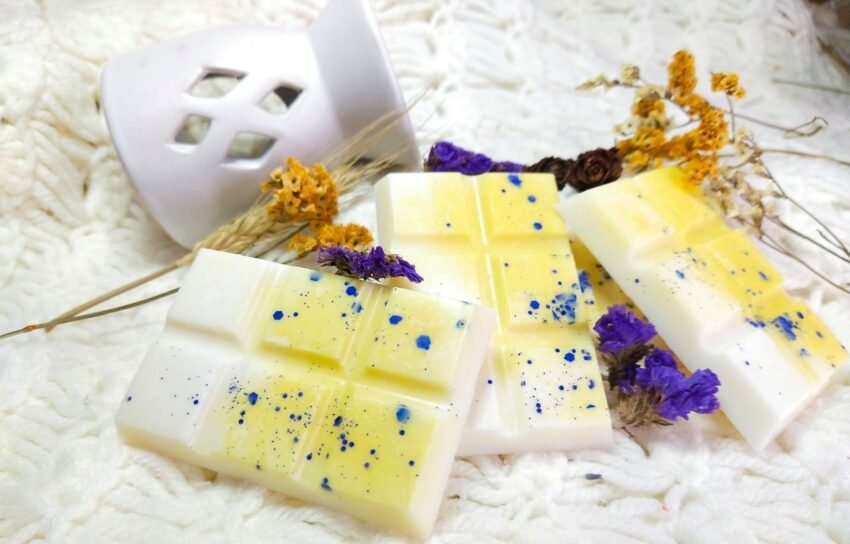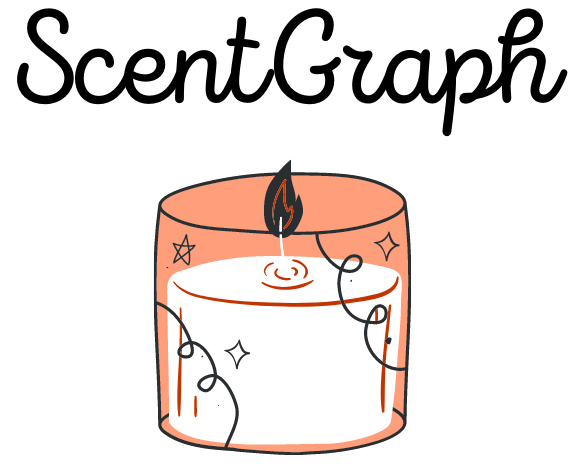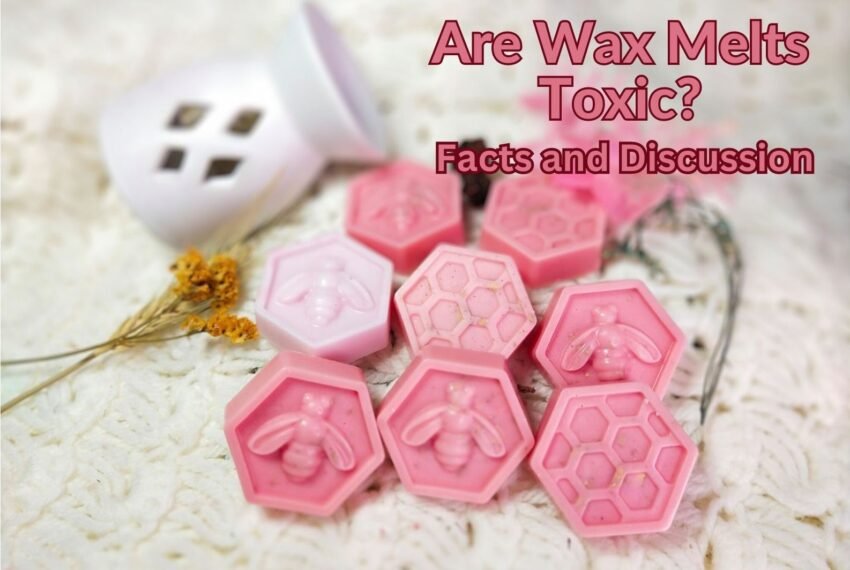Wax melts are a popular path to a fragrant home. And when we bring something into our home, we have to consider multiple aspects about these things, including their effects on health.
So, are wax melts toxic? The simple answer is, no wax melts are not toxic. There is no evidence to suggest that using wax melts can have any adverse effects.
Now that we’ve got the basic answer, let’s dive into the details for a better understanding to see the claims and the evidence we have.
Getting To Know Wax Melts – Mechanism And Emissions
A Quick Look At Wax Melts – Working And Mechanism
To put things simply, wax melts are wickless blocks of scented wax. They are quite similar to a classic candle, but there is no wick and thus there’s no need to light wax melts.
They are so similar to candles, that you could, in fact, cut up a scented candle and use it as wax melts, without burning it.
Rather than using a flame for heat, wax melts rely on indirect heating through a candle or electricity. You can utilize specific devices called wax warmers for this purpose, or create a DIY wax warmer.
As the wax melts with the heat, it frees up the essential oils or fragrance oils held in the blocks of wax. Thanks to the available heat and molten wax, the fragrant oils waft into the air, providing the wonderful aroma that we love.
Wax melts are known by several names, including wax tarts, wax blocks, etc.
What Are Wax Melts Made From?
There are the principal components of wax melts:
- Wax (paraffin wax, soy wax, palm wax, etc.)
- Fragrance (essential oils or fragrance oils)
- Dyes (optional wax dyes for color and design)
While the presence of dyes is optional, they are usually present in wax melts. And it’s a good thing, since they contribute to the beautiful looks and overall design of wax melts.
Wax melt creators can be very creative with the design and colors of the wax melts. And they look rather cute when used, so I’m all for using dyes and coloring wax for wax melts.
Paraffin wax is perhaps the most popular choice for wax melts. It’s easy to work with, cost-effective, and works rather well with most dyes and fragrances. Soy wax is another popular option, though types of wax might work as well.
Are Wax Melts Toxic – Emissions From The Use Of Wax Melts

Considering only the wax melts, emissions are limited to the fragrance. Irrespective of the origin, fragrances are usually organic compounds, and they do include an angle of VOCs.
There might also be trace amounts of aniline (most dyes are aniline-based), and some other components.
These components generally are not a threat, since only a minimal amount might be present. The fragrances are not considered a health risk for humans, at least in conventional exposure.
So, considering just wax melts, there doesn’t appear to be anything toxic or especially risky being released.
Now, let’s consider the heating mechanism for the wax melts.
If you’re using an electricity-based wax warmer, the heating mechanism will not add any extra emissions or pollutants to the air.
However, things change if you’re using a candle or tealight-based wax warmer. In this scenario, the emissions from the tealight/candle become important as well. There is bound to be some soot from the flame. Additionally, the tealight will release some undesirable substances as a result of combustion.
However, burning a tealight candle isn’t seen as a health risk in most scenarios.
Are Paraffin Based Wax Melts Toxic?
As we noted previously, paraffin wax is the most used type of wax for candles and wax melts. However, there is a bit of controversy surrounding its use.
There have been claims that burning paraffin wax candles can have adverse effects. I discussed these claims at length in a previous article, and there doesn’t seem to be a good reason to back claims that throw shade on the use of paraffin candles.
Keep in mind, this doesn’t mean that paraffin wax burns absolutely clean. There are emissions, but it isn’t considered a health risk. Plus, other types of wax can have some emissions as well.
The reason I specifically mention this is because several people, especially marketers, extend the same line of reasoning to wax melts.
The claim is that paraffin wax gives out harmful chemicals even when used with wax melts, the same as it does when used with candles.
Neither of these claims is even close to the truth. This is especially true for wax melts, where the wax doesn’t burn and thus there are far lower emissions.
To be clear, paraffin-based wax melts are not toxic and have no such disadvantages over other wax types either.
It is worth noting here that paraffin wax is derived from petroleum. As such, there are considerations for environmental impact and sustainability. But neither of these are relevant to our current discussion and consideration for the (perceived) toxicity of wax melts.
More Considerations On Using Wax Melts At Home

Now that we have an understanding that wax melts are not toxic and are generally safe for use, let’s look at other considerations and options for a thorough approach.
Are Wax Warmers Safe?
Wax warmers are devices used to heat wax melts and provide fragrance. These are generally considered safe.
A well-built wax warmer will be capable of handling heat and will keep the molten wax within its bowl.
Electric wax warmers have no open flame, which means the fire risk is greatly reduced, making these a good choice.
While flame-based wax warmers rely on a flame from a tealight or candle, they too are considered safe since the tealight is usually contained within the wax warmer. Yet, the presence of a flame does deserve additional care.
Either way, though wax warmers are considered safe, they should not be left unattended. It is partially for this reason that you should not keep wax warmers on for a long time. Ideally, wax warmers should be turned off in about four hours.
Are Candle Warmers Safe?
A candle warmer is a type of wax warmer, however, it is usually designed to work with scented candles. Rather than burning the candle, the candle warmer melts the candle wax and releases fragrance. It’s pretty much the same mechanism as a wax warmer.
Candle warmers are electric devices and don’t involve naked flames. These are generally considered safe. Although, reasonable precaution in the form of keeping an eye on a candle warmer at work is desirable.
Are Soy Wax Melts Toxic?
Soy wax melts, as with most other types of wax melts, are not toxic. These wax melts use soy wax, which is generally considered a relatively cleaner and sustainably-sourced wax. These are very popular, perhaps only next to paraffin-wax based wax melts.
Soy wax melts are safe for use and aren’t considered toxic.
Are Wax Warmers Toxic To Pets?
If you have a furry friend at home, it would be natural and responsible to consider how they’ll be affected by wax warmers.
The key element to consider here would be fragrances and essential oils used in the wax melts. Animals like cats and dogs perceive these fragrant oils differently as compared to humans. So, while we may bask in the fragrance, animals might find the smell overbearing. Some fragrances might not even be suitable for these pets.
There might be an element of trial and error here. And cats are much more sensitive to such fragrances than dogs.
There might be some fragrances that your pet loves, and others that they don’t want anywhere near them. Your pet’s reaction should give you the information you need in these scenarios.
Also, remember to keep the wax warmer and wax melts out of the reach of your pets.
While the fragrances might not be troublesome to pets, no good will come out of the pet accidentally ingesting wax melts or knocking over a wax warmer.
Conclusion – No Need To Be Wary Of Wax Melts
There is no evidence to suggest that wax melts are toxic. These might actually be safer than other home fragrance options like scented candles since wax melts don’t necessarily require a flame. In fact, even tealight-based wax warmers might be safer since the candle is contained.
Also, wax doesn’t burn in wax melts. In these, the wax simply melts, freeing up the fragrant essential oils or fragrance oils to flow. As such, the wax and other component elements like the fragrances don’t burn and aren’t exposed to extreme heat.
As such, the use of wax warmers and wax melts, especially with electric wax warmers, can have lower concerns concerning emissions and overall air quality.
So, as we see, wax warmers and wax melts are quite useful and not toxic.

